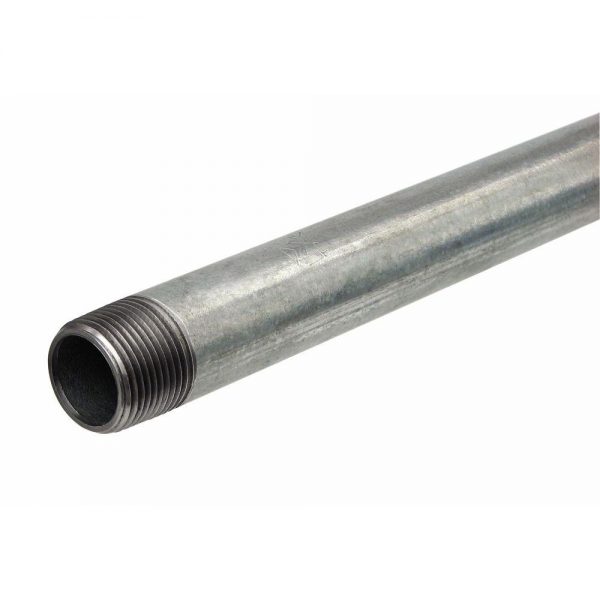
1. Hot-dip galvanized pipe
The advantages of hot-dip galvanized pipe include uniform coating, strong adhesion, and long service life. The purpose of the hot-dip galvanized pipe is to combine the iron matrix and the coating by causing the molten metal to react with it to form an alloy layer. The steel pipe is first pickled before being hot-dip galvanized. Following pickling, the steel pipe is cleaned in a tank containing an aqueous solution of ammonium chloride, zinc chloride, or a mixture of ammonium chloride and zinc chloride in order to remove the iron oxide that has built up on its surface before being placed in a hot dip bath. In order to create a layer of corrosion-resistant zinc-iron alloy with a tight structure, the steel tube substrate will go through intricate physical and chemical reactions with the molten plating solution. Because the alloy layer is integrated with the steel pipe matrix, it has a high level of corrosion resistance.

2. Cold galvanized pipe
The cold galvanized pipe's zinc layer is an electroplating layer that is layered separately from the steel pipe substrate. Its corrosion resistance is poor because the zinc layer is thin and is only loosely fastened to the steel pipe substrate. As a result, it should be illegal to use cold galvanized pipes as water supply pipes in residential structures. Electro-galvanizing, or cold galvanizing. Only 10–50g/m2 of the surface is galvanized. Comparing its corrosion resistance to hot-dip galvanized pipe, it is noticeably different. Most regular galvanized pipe manufacturers do not use electro-galvanized materials to ensure quality (cold plating). Electro galvanizing is only utilized by small businesses with outdated equipment, and of course, its costs are relatively cheap.